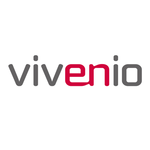Description

Airmeet

Slido
Comprehensive Overview: Airmeet vs Slido
Airmeet and Slido are both platforms focused on enhancing virtual events and audience engagement, though they cater to slightly different needs within that space. Below is an overview of each platform, focusing on their primary functions, target markets, market share, user base, and key differentiations.
Airmeet
a) Primary Functions and Target Markets:
- Primary Functions: Airmeet is primarily a virtual event platform designed to host a variety of event types, including conferences, webinars, workshops, and networking events. It offers features such as virtual tables for networking, interactive sessions, live streaming, and analytics tools.
- Target Markets: Airmeet targets businesses, event organizers, associations, educational institutions, and other organizations looking to host large-scale virtual events. It particularly appeals to those looking to recreate the networking and interactive elements of physical events in a virtual setting.
b) Market Share and User Base:
- Market Share: While specific market share data can be difficult to ascertain, Airmeet is a significant player in the virtual events space, especially popular in regions like Asia and Europe. It faces competition from platforms like Zoom, Hopin, and other comprehensive event solutions.
- User Base: Airmeet's user base includes a wide range of industries, from tech companies holding global conferences to educational institutions conducting online lectures and seminars.
c) Key Differentiating Factors:
- Networking Focus: Airmeet distinguishes itself with a strong emphasis on networking, offering features like virtual tables and lounges that mimic real-world socializing opportunities.
- Customization and Branding: It provides extensive customization options to brand the event environment according to the organization’s needs, which is particularly appealing for professional conferences.
- Community Engagement Tools: Features like live polls, Q&A, and reaction emojis are integrated to boost audience interaction.
Slido
a) Primary Functions and Target Markets:
- Primary Functions: Slido is primarily an audience interaction tool designed to increase engagement through live polls, Q&A, quizzes, and surveys during both physical and virtual meetings and events.
- Target Markets: Slido targets event organizers, educators, and corporate teams looking to improve participant interaction during presentations, meetings, trainings, and webinars. It is often used alongside platforms like Zoom, Microsoft Teams, and Google Slides.
b) Market Share and User Base:
- Market Share: Slido has a strong position in the audience engagement market, widely adopted by corporations, educational institutions, and event organizers. It is a leader in its niche, particularly renowned for its seamless integration capabilities.
- User Base: Slido is used globally across various sectors, with a user base that includes enterprise clients, educational institutions, and event management companies. It is often chosen for its simplicity and effectiveness in boosting participation.
c) Key Differentiating Factors:
- Ease of Integration: One of Slido’s most significant advantages is its ability to integrate smoothly with existing platforms like presentation software and video conferencing tools, enhancing their functionality.
- Focus on Simplicity and Accessibility: Slido provides an easy-to-use interface for both organizers and participants, prioritizing accessibility and user-friendliness.
- Advanced Interaction Features: Its robust set of features for audience engagement makes it highly effective for garnering real-time feedback and facilitating interactive discussions.
Comparative Overview
- Functions and Features: While Airmeet is a comprehensive virtual event platform with a focus on replicating the full event experience online, Slido specializes in enhancing engagement within events through interaction tools.
- Target Audience: Airmeet is suitable for organizers wanting to host entire virtual events, while Slido is ideal for enhancing interaction and participation in any event format, including in-person and hybrid.
- Market Position: Both platforms are leaders within their respective niches, although their market segments overlap when it comes to virtual events.
- Unique Offerings: Airmeet's strength lies in its networking features and event customization, whereas Slido excels in its integration capabilities and simplicity in engaging audiences.
Ultimately, the choice between Airmeet and Slido would depend on whether the priority is hosting an entire virtual event versus enhancing interaction at any event.
Contact Info

Year founded :
2019
+1 541-745-8254
Not Available
United States
http://www.linkedin.com/company/airmeetcom

Year founded :
2012
+1 408-906-2726
Not Available
Not Available
http://www.linkedin.com/company/slido
Feature Similarity Breakdown: Airmeet, Slido
Airmeet and Slido are both platforms designed to enhance virtual events and meetings, but they cater to slightly different needs and audiences. Here is a breakdown of their similarities and differences:
a) Core Features in Common:
-
Audience Engagement Tools:
- Both Airmeet and Slido offer tools to enhance audience interaction, such as polls and Q&A sessions. These features allow event organizers to gather feedback and engage attendees actively.
-
Analytics and Reporting:
- Each platform provides analytics and reporting capabilities to help organizers understand engagement levels and participation metrics. This is crucial for assessing the success of events and improving future sessions.
-
Integration Capabilities:
- Both products can be integrated with other platforms and tools. They often support integrations with services like Zoom, Microsoft Teams, Slack, and other productivity tools to streamline workflows.
-
Customization Options:
- Airmeet and Slido allow some level of customization to align with event branding, including custom logos and themes for events.
b) User Interface Comparisons:
- Airmeet:
- Airmeet's interface is designed to simulate a virtual venue with different segments like a stage, networking tables, and booths, mimicking a real-life event atmosphere. The UI is visually rich and targets users who seek an immersive event experience. It has a more structured approach, which is beneficial for large conferences or fairs.
- Slido:
- Slido focuses on simplicity and ease of use, with a more minimalistic interface that emphasizes quick access to engagement features like polls and Q&A. The UI is straightforward and user-friendly, designed to be used seamlessly during meetings or webinars without disrupting the flow of the session.
c) Unique Features:
-
Airmeet:
- Virtual Tables and Networking: Airmeet offers virtual tables that allow participants to engage in group discussions, mimicking the experience of sitting at a table during a physical event.
- Event Booths: Designed for large events and expos, Airmeet allows sponsors or exhibitors to set up virtual booths where attendees can interact, watch demos, and download resources.
- Backstage Feature: Speakers and hosts can use the backstage area to prepare before going live, akin to waiting behind the curtain at a physical event.
-
Slido:
- Integration with Presentation Software: Slido is often favored for its seamless integration with platforms like PowerPoint and Google Slides, allowing presenters to incorporate audience interactions directly into their presentations.
- Frequency Analytics for Questions: Slido provides detailed analytics on the frequency and popularity of questions asked during Q&A sessions, helping moderators address the most pressing issues.
- Word Clouds: This feature enables users to visualize audience feedback in real-time, creating dynamic word clouds that can add a visual element to discussions.
In summary, while both Airmeet and Slido offer quality tools for virtual event engagement, Airmeet is more suitable for those looking to host comprehensive, large-scale events with networking capabilities. Slido, on the other hand, excels in situations where interactive features need to be seamlessly integrated into presentations and meetings, offering a user-friendly, straightforward interface.
Features

Virtual Events
Customization Options
Analytics and Reporting
Event Management
Attendee Engagement
Analytics and Reports
Engagement Tools

Customization Options
Integration Capabilities
Data Insights and Analytics
Real-Time Audience Interaction
Best Fit Use Cases: Airmeet, Slido
Airmeet:
a) Best Fit Use Cases:
-
Virtual Events and Conferences: Airmeet is particularly strong in hosting virtual conferences, summits, and workshops. It's designed for businesses that require robust features to facilitate large-scale events online.
-
Networking Events: Companies that prioritize networking can leverage Airmeet's networking tables and lounge features, which emulate the experience of in-person networking in a digital environment.
-
Community Engagement: Communities or organizations looking to engage their members through online meetups can benefit from Airmeet's features, which support interactive sessions and engagement.
-
Education and Training: Educational institutions or corporates looking for platforms to conduct webinars or training sessions with multiple breakout options will find Airmeet suitable.
b) Industries & Company Sizes:
-
Tech and Software Companies: These businesses often host large-scale digital events, making Airmeet an ideal platform due to its focus on tech-based interactions.
-
Associations and Non-Profits: For those organizing large memberships or donor events, Airmeet offers tools to maximize engagement and interaction.
-
Medium to Large Enterprises: Larger companies or educational institutions with a focus on structured programs and multiple session types can effectively use Airmeet's suite of features.
Slido:
a) Best Fit Use Cases:
-
Interactive Presentations: Slido is well-suited for enhancing live presentations by allowing real-time audience interaction through Q&As and polls.
-
Internal Meetings: Organizations can use Slido to make internal meetings more engaging, fostering better communication among teams of all sizes.
-
Conferences and Workshops: It complements in-person or virtual conferences as it provides an easy-to-use interface for audiences to participate interactively.
-
Feedback and Surveys: For companies looking to gather instant feedback during any event or meeting, Slido offers straightforward tools for conducting surveys and polls.
b) Industries & Company Sizes:
-
Corporate Meetings and Events: Corporate sectors, where frequent interactions occur, benefit from Slido's focus on increasing engagement and collecting feedback.
-
Education and Training Institutions: Both educational institutions and corporate training programs can use Slido to create interactive, engaging content for students and trainees.
-
Small to Medium Enterprises (SMEs): SMEs looking for cost-effective means to enhance engagement during meetings or smaller-scale events find Slido manageable and effective.
Catering to Different Industry Verticals or Company Sizes:
-
Airmeet tends to cater more towards medium to large businesses with a need for comprehensive event management and networking features, ideal for industries that host regular and sizable online interactions.
-
Slido, on the other hand, provides a simpler, more focused approach ideal for engaging audiences of any size in both meetings and events, often chosen by industries that need enhanced participation and feedback collection in an easy-to-implement manner.
Pricing

Pricing Not Available

Pricing Not Available
Metrics History
Metrics History
Comparing teamSize across companies
Conclusion & Final Verdict: Airmeet vs Slido
When comparing Airmeet and Slido, it's essential to understand their core functionalities and intended use cases. Airmeet is primarily a virtual event platform designed to host large-scale conferences, summits, workshops, and community meetups, offering immersive networking experiences and interactive features. Slido, on the other hand, is a Q&A and polling tool used to enhance audience interaction during meetings, conferences, and lectures.
Conclusion and Final Verdict
a) Best Overall Value: Considering all factors, the best overall value depends on the user's specific needs. If the primary aim is to host a comprehensive virtual event with strong networking capabilities, Airmeet offers the best value. However, if the focus is on enhancing audience interaction through questions and polls within an already established event framework, Slido is more suitable.
b) Pros and Cons
-
Airmeet:
- Pros:
- Robust platform for hosting large-scale interactive virtual events.
- Offers features like breakout sessions, virtual lounges, and one-on-one networking capabilities.
- Customizable event spaces for branding.
- Cons:
- May be too feature-rich and complex for users only needing basic interaction tools.
- Higher price point, which might not be justified for smaller or simpler events.
- Pros:
-
Slido:
- Pros:
- Excellent for real-time audience engagement with Q&A sessions, polls, and quizzes.
- Easy to integrate with other platforms like Zoom and Microsoft Teams.
- User-friendly interface and setup.
- Cons:
- Limited in terms of hosting complete virtual events; primarily for audience interaction.
- Less focus on networking and event management features compared to Airmeet.
- Pros:
c) Recommendations:
-
Users looking to host elaborate virtual events with extensive networking opportunities should opt for Airmeet. Its suite of event management tools is unrivaled for comprehensive experiences.
-
For those who already have a platform for hosting events but need to enhance audience participation and interactive components, Slido is the recommended choice. Its simplicity and effectiveness in engaging audiences make it a valuable addition.
-
It's also worth considering both tools complementarily; for instance, using Airmeet as the main event platform and integrating Slido for audience engagement. This combination can offer a highly enriched virtual event experience.
Ultimately, the decision should be based on the event goals, scale, and budget available. Users should take advantage of trial versions, if available, to better understand each tool's capabilities in practice.
Add to compare
Add similar companies




